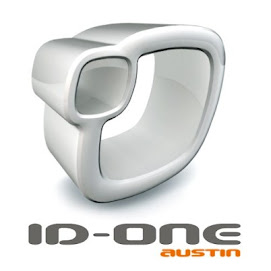This global recession has led to significant changes in what consumers are buying. We are seeing far less conspicuous consumption and much more emphasis on socially responsible behavior.
Health and wellness are being emphasized as the answer to a stressful lifestyle.
Slower retail sales growth and changing preferences only add to the urgency to create products that excite and delight consumers.

BlueAvocado gro-pak™, designed by ID-ONE, is a stylish sustainable grocery system that folds up and fits into the pak bag.
Growing during Recessions
1. Grab this Opportunity
While other companies are hunkered down focusing on survival, recessions offer invaluable chances to rethink your business strategies, solidify and deepen relationships with your customers, strengthen talent pools, and stretch into new markets. It takes courage and lots of insight about which areas of your company are positioned to thrive and which departments could benefit from some fat trimming. It’s also essential to keep a steady focus on the long term, since additional spending today may create short-term pain, such as a hit to earnings. But in the long run, if you focus on the right things, it will be worth it.
2. Keep an eye on the Competition
As your competitors slash budgets and retrench, they leave the market wide open. This may be an ideal time to boost spending on marketing to take advantage of lower advertising rates and reduced clutter in the marketplace as other players retreat.
3. Prepare for the Rain
There’s a story that begins with two men praying for rain. Both men are faithful and believe it will rain, but only one actually prepares his fields for it. Focus on research and development, because having new products in the pipeline that will be ready to go when economic growth resumes is a sure-fire way to boost sales. “In a period of economic turbulence, the question is not whether to innovate. The question is how to innovate,” says Andrew Razeghi, a professor of marketing at the Kellogg School of Management at Northwestern University.
4. Prune Wisely
Positive customer experiences must be maintained to the greatest extent possible. It’s the little things that add perceived value and positive first impressions that will determine if a customer comes back. If you do need to cut back, start by looking at behind the scene areas such as manufacturing, management, general and administrative expenses, and product lines that are ancillary to your core business.
5. Transparency builds Loyalty
Whether or not you use this opportunity to recruit new talent, it’s important to let existing employees know that they are valued. Talk openly in meetings about both the opportunities and challenges the company faces, and soliciting the support and advice of the employees. Employees who not only hold onto their jobs in a recession, but feel like they had a hand in bringing the company through hard times, are going to feel an enormous sense of loyalty in the long run.
Innovation is key!
"Innovation requires substantial long-term investments, which are difficult to make when a company is struggling with its very existence. It also requires knowing consumers inside out,"
According to the Financial Times, total R&D expenditures are declining.
R&D staffing at many companies has been either pared back or assigned other tasks that impair these individuals’ ability to pursue truly innovative product development. The increased scrutiny and downsizing of internal R&D budgets is likely a major reason why the innovation imperative has moved beyond the walls of the corporate headquarters.
Externally sourced innovation can not only be less expensive for the company, it can also provide greater financial rewards.
Where the best ideas come from
“Open businesses are increasingly trading ideas with their competitors, customers, and other outsiders, showing a mutual receptivity to new ways of thinking and multiplying innovation and benefits for all participants with unprecedented speed. Companies that know how to encourage the bubbling up of ideas, internally or from an outside community of experts, advisors, or opinionated consumers, will expand their base of imaginative assets.”
– Innovation Nation. John Kao
Successful companies will likely be those with innovation designed by the consumer themselves. Listening to the customers wants and needs creates products that not only captures the consumer’s imagination, provides entertaining brand experiences, or offers solutions to previously unmet needs, but it also leads to the creation of products that the consumers perceive as worthy of their price.
ID-ONE's August wink at Product Development

Rubix cube –Ernő Rubik invented the Cube in the spring of 1974 in his home town of Budapest, Hungary. He wanted a working model to help explain three-dimensional geometry and ended up creating the world’s best selling toy. More than 300 million Rubik’s Cubes have been sold worldwide. At the height of the Rubik’s craze in the mid-1980s, it was estimated that one-fifth of the world’s population had played the Cube.















.jpg)



